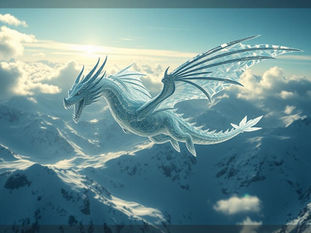
Guide to Creating Consistent AI Characters with Midjourney
May 23
4 min read
0
9
0

Want to create AI characters that look the same across many different images? Making sure your AI avatars stay consistent is key if you plan to use them often, like for stories, games, or marketing.
This guide walks you through a process for building reliable AI characters using Midjourney's features, including Omni Reference. It's a step-by-step approach to help you get the face and style you want, every time.
Start with Your Character Concept
Before you generate any images, define your character. Think about basic details.
Name and age
Physical description (height, build, features, hair)
Style (fashion, look)
Personality
Getting these details clear from the start helps guide your image generation.
Develop Initial Image Ideas
With your concept ready, you can start thinking about how to create a first visual placeholder. One way is to use AI text tools to generate a picture idea or even a starting prompt for Midjourney based on your character description.
Sometimes the first images from these tools aren't perfect, but they can give you a starting point or a prompt to take into Midjourney.
Generate Potential Reference Images in Midjourney
Now, head to Midjourney. You'll want to generate many image options based on the prompt or ideas you got from your concept stage.
Consider creating a custom style profile in Midjourney to help keep the overall look consistent across these initial generations. Think about styles you like: realistic, cinematic, fashion-focused, etc.
Generate as many variations as you can. Look for an image that has features you like for your character.
Handle Image Moderation Issues
As you generate, you might run into issues with images being moderated. A common problem in AI image generation is how it views parts of the body like legs. To avoid this, focus on images that are cropped closer, perhaps showing the upper body or just the head and shoulders.
Using closer crops can help you get images that Midjourney is more likely to let you use as a reference later.
Refine and Select Your Primary Reference
From the images you generated, pick one that you feel best represents your character's look. This image will become your main reference.
To make this reference image even better for consistency, try generating a new image *of* that selected face. Use settings that produce a simple headshot: straight on view, good lighting, plain background. This helps capture the face clearly without distractions.
Having a clear headshot reference is very helpful when you use it for methods like Omni Reference, as it gives Midjourney a clean base image to work from.
Generating lots of variations and angles manually can take time. Tools like the Midjourney Automation Suite from TitanXT can help speed this up by managing multiple prompts and variations automatically, making it easier to find that perfect reference image.
Using Omni Reference for Consistency
Once you have your refined reference image, you can use Midjourney's Omni Reference feature. This tells Midjourney to try and make the new images look like your reference image.
Combine your Omni Reference image with prompts describing the scene, pose, emotion, or clothing you want your character to have in a specific image. Midjourney will then generate images that include your consistent character in those different settings.
Iterate and Adjust
Sometimes, even after finding a good reference, you might decide the character needs a slight adjustment based on feedback or further ideas. This is normal.
You can revisit the earlier steps. Generate new possible reference images, perhaps focusing on slightly different features or styles. Finding a new base image and then using Omni Reference again can help you get closer to the exact look you need.
Adding more specific custom profiles (like a profile tuned for headshots) can make the process of getting a usable reference image faster and more reliable the second time around.
Apply Your Consistent Character in New Scenes
Once you have your finalized consistent character reference image, you can use it with a wide range of prompts. Describe various scenes, actions, backgrounds, and styles.
By pairing your trusted Omni Reference image with different descriptive prompts, you can put your character into almost any situation you can imagine, always knowing it will be the same character.
Managing prompts and reference images for dozens or hundreds of images for a larger project can be complex. The Midjourney Automation Suite from TitanXT is designed to help streamline this process, allowing you to manage characters and generate many images with consistency more easily.
Conclusion
Creating consistent AI characters in Midjourney takes a thoughtful process, starting with a clear concept and refining your reference images. By using tools like Omni Reference and taking steps to get a clear, usable reference – like a good headshot – you can reliably create images featuring the same AI person in different settings.
This approach lets you develop unique AI avatars you can use repeatedly for various projects.
To make generating consistent images for your AI characters even more efficient, explore using an automation tool. The Midjourney Automation Suite from TitanXT can help you manage your characters and generate large volumes of consistent images faster.






